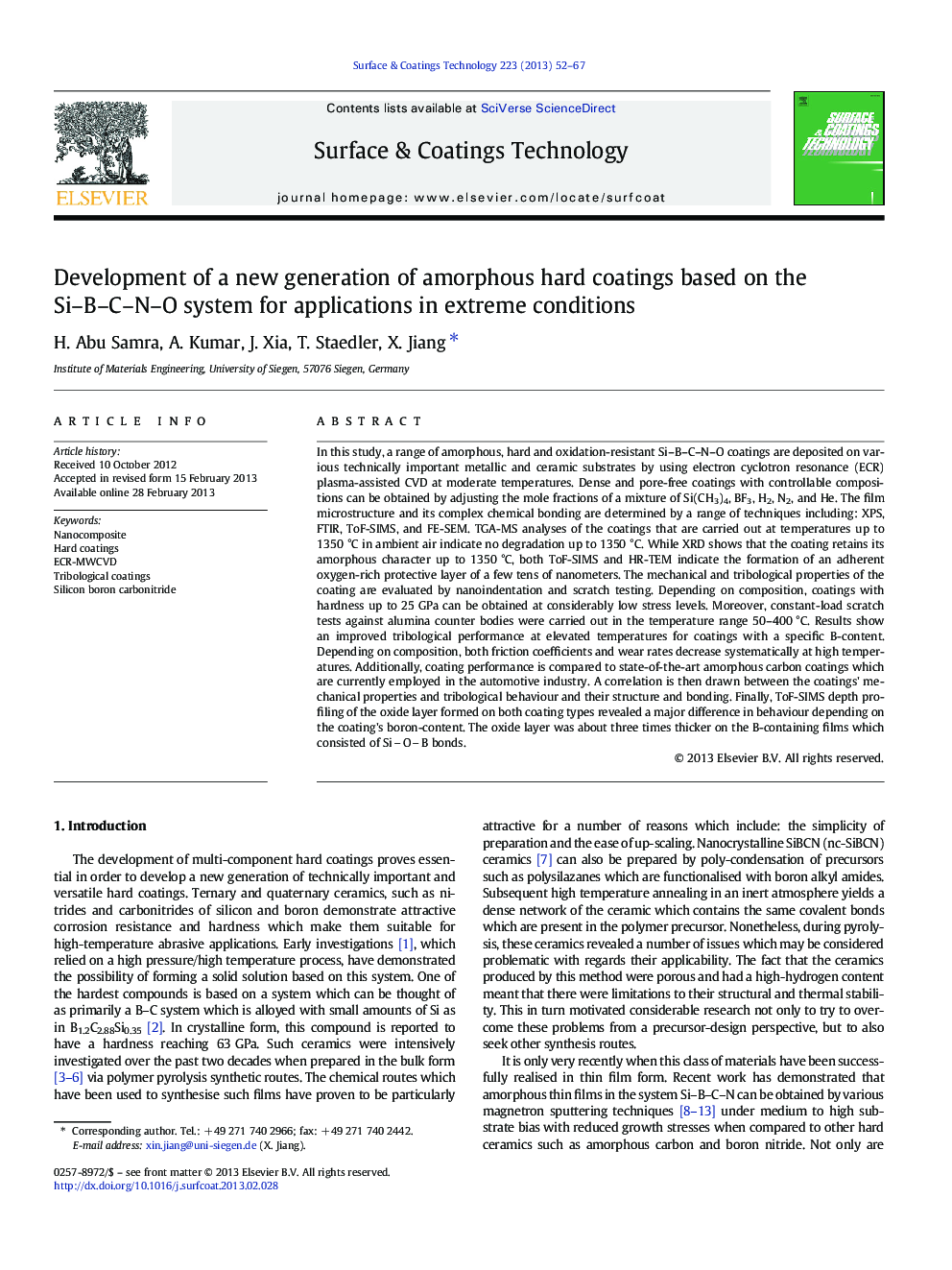| کد مقاله | کد نشریه | سال انتشار | مقاله انگلیسی | نسخه تمام متن |
|---|---|---|---|---|
| 1658025 | 1517655 | 2013 | 16 صفحه PDF | دانلود رایگان |
عنوان انگلیسی مقاله ISI
Development of a new generation of amorphous hard coatings based on the Si-B-C-N-O system for applications in extreme conditions
دانلود مقاله + سفارش ترجمه
دانلود مقاله ISI انگلیسی
رایگان برای ایرانیان
کلمات کلیدی
موضوعات مرتبط
مهندسی و علوم پایه
مهندسی مواد
فناوری نانو (نانو تکنولوژی)
پیش نمایش صفحه اول مقاله

چکیده انگلیسی
In this study, a range of amorphous, hard and oxidation-resistant Si-B-C-N-O coatings are deposited on various technically important metallic and ceramic substrates by using electron cyclotron resonance (ECR) plasma-assisted CVD at moderate temperatures. Dense and pore-free coatings with controllable compositions can be obtained by adjusting the mole fractions of a mixture of Si(CH3)4, BF3, H2, N2, and He. The film microstructure and its complex chemical bonding are determined by a range of techniques including: XPS, FTIR, ToF-SIMS, and FE-SEM. TGA-MS analyses of the coatings that are carried out at temperatures up to 1350 °C in ambient air indicate no degradation up to 1350 °C. While XRD shows that the coating retains its amorphous character up to 1350 °C, both ToF-SIMS and HR-TEM indicate the formation of an adherent oxygen-rich protective layer of a few tens of nanometers. The mechanical and tribological properties of the coating are evaluated by nanoindentation and scratch testing. Depending on composition, coatings with hardness up to 25 GPa can be obtained at considerably low stress levels. Moreover, constant-load scratch tests against alumina counter bodies were carried out in the temperature range 50-400 °C. Results show an improved tribological performance at elevated temperatures for coatings with a specific B-content. Depending on composition, both friction coefficients and wear rates decrease systematically at high temperatures. Additionally, coating performance is compared to state-of-the-art amorphous carbon coatings which are currently employed in the automotive industry. A correlation is then drawn between the coatings' mechanical properties and tribological behaviour and their structure and bonding. Finally, ToF-SIMS depth profiling of the oxide layer formed on both coating types revealed a major difference in behaviour depending on the coating's boron-content. The oxide layer was about three times thicker on the B-containing films which consisted of SiOB bonds.
ناشر
Database: Elsevier - ScienceDirect (ساینس دایرکت)
Journal: Surface and Coatings Technology - Volume 223, 25 May 2013, Pages 52-67
Journal: Surface and Coatings Technology - Volume 223, 25 May 2013, Pages 52-67
نویسندگان
H. Abu Samra, A. Kumar, J. Xia, T. Staedler, X. Jiang,